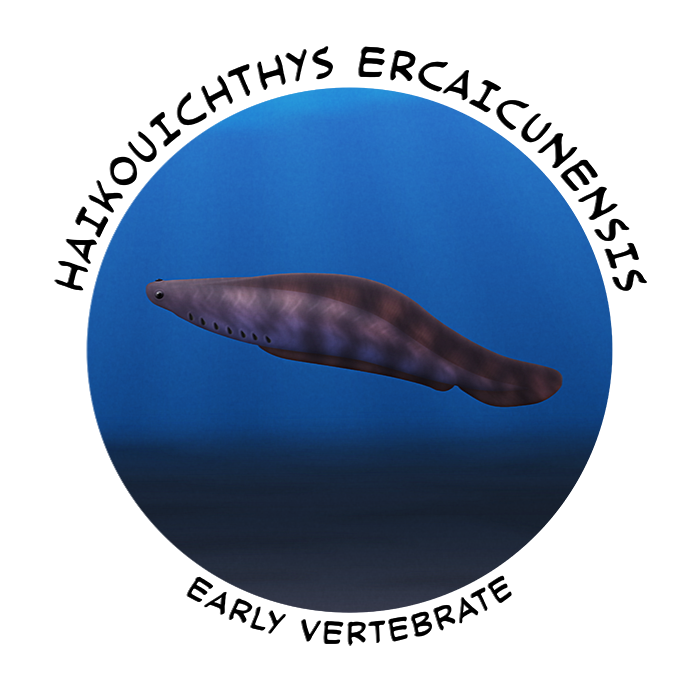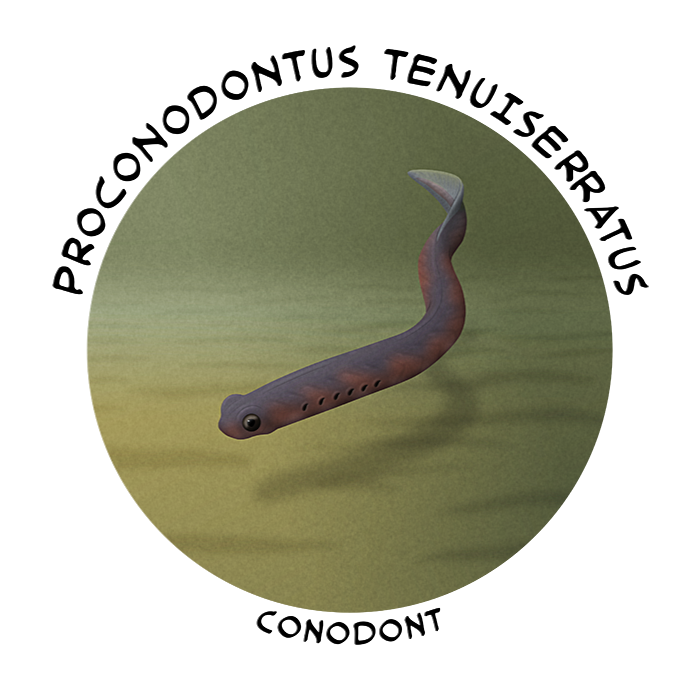Vertebrates are by far the most numerous and diverse group of chordates today, with over 65,000 known species including fish, amphibians, reptiles, birds, and mammals. Genetic studies show that they’re closely related to the weird bag-like tunicates, and their shared common ancestor was probably something lancelet-like.
And the earliest true vertebrates would have looked something like Haikouichthys ercaicunensis.

This little 2.5cm long (1″) animal is known from the Chinese Chengjiang fossil deposits (~518 million years ago), and had a defined skull, eyes, and gill openings, making it one of the earliest chordates that can be potentially be called a fish – although it would have been a “jawless fish“, since vertebrate jaws didn’t evolve until about 50 million years later in the Ordovcian.
But the vertebrate lineage probably goes back further than the Chengjiang fossils, because remains from another group of early fish may date back to at least 530 million years ago – tiny tooth-like structures from the mouths of conodonts.
Their microfossil “teeth” have been known since the 1850s, and they’re so widespread and distinctive that they’re often used for dating rock layers, but the identity of the actual “conodont animals” was a longstanding paleontological mystery. It wasn’t until the 1980s that some exceptionally well-preserved fossils revealed that the “teeth” came from small eel-like vertebrates with large eyes, tail fins, and a notochord.
Although they had rather complex “jaws” with arrays of up to 19 “teeth”, these features seem to have actually arisen completely separately from the jaws and teeth of other vertebrates. Conodont “teeth” came in a variety of shapes from simple spikes to blades and combs, all specialized for different feeding strategies. Some seem to have been filter-feeders, others were predatory, and some may even have been venomous.

Some Early Cambrian conodont-like fossils might actually be the spiny mouthparts of arrow worms, but later examples like Proconodontus tenuiserratus were definitely true conodonts. Known from various locations around the world and dating to about 492 million years ago, this conodont had “teeth” only 0.6mm long (0.02″) and the full animal was probably only a few centimeters long.
Conodonts were a very successful group throughout most of the rest of the Paleozoic, surviving multiple major extinction events. But their diversity began to dwindle towards the end of the era, and despite briefly recovering during the early Mesozoic they eventually disappeared completely during the Triassic-Jurassic extinction about 200 million years ago.
